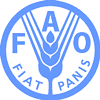 |
|||||||||
|
|||||||||||||||||||
|
|
Bird
Flu Situation in Indonesia Critical The prevalence of avian influenza in Indonesia remains serious despite containment efforts undertaken by national authorities and the international community, FAO warned today. Indonesia is the country worst hit by avian influenza.
“The human mortality rate from bird flu in Indonesia is the highest in the world and there will be more human cases if we do not focus more on containing the disease at source in animals,” said FAO Chief Veterinary Officer Joseph Domenech. “Furthermore, I am deeply concerned that the high level of virus circulation in birds in the country could create conditions for the virus to mutate and to finally cause a human influenza pandemic,” Domenech warned. “The avian influenza situation in Indonesia is grave – all international partners and national authorities need to step up their efforts for halting the spread of the disease in animals and making the fight against the virus a top priority.” 31 provinces affected Avian influenza has become deeply entrenched in Indonesia with 31 out of 33 provinces being infected. The virus is endemic in Java, Sumatra, Bali and southern Sulawesi with sporadic outbreaks reported from other areas. Since the first outbreaks in 2003 avian influenza has spread rapidly across Java into Bali, Kalimantan and Sumatra. In 2006 the virus spread further east infecting Papua and much of Sulawesi. About twenty percent of the chicken population of 1.4 billion is scattered in around 30 million backyards, where people raise poultry for food or income. Despite major control efforts, the country has not succeeded in containing the spread of avian influenza in poultry, Domenech said. “Indonesia is facing an uphill battle against a virus that is difficult to contain. Major human and financial resources, stronger political commitment and strengthened coordination between the central, province and district authorities are required to improve surveillance and control measures.” Major constraints A highly decentralized administration, under-resourced national veterinary services, lack of engagement with commercial poultry producers, insufficient international and national financial and human resources for control campaigns and the challenges of implementing a comprehensive communication strategy are the major constraints the country is facing, he noted. “We have also observed that new H5N1 avian influenza virus strains have recently emerged creating the possibility that vaccines currently in use may not be fully protecting poultry against the disease. This issue is being addressed by the Indonesian Ministry of Agriculture with technical assistance from OFFLU (OIE/FAO Influenza Network of Laboratories) and funding provided by USAID and AusAID. Also required are more investigations and the development of better poultry vaccines,” Domenech said. “The major challenge is to immediately apply the main components of a successful national avian influenza control strategy, based on effective surveillance, emergency culling and compensation, vaccination, improved biosecurity, effective laboratory and quarantine procedures, and movement controls of poultry and poultry products.” Support FAO is supporting the Indonesian authorities in most of these areas. In addition, the agency has helped to train local teams of animal health professionals in participatory disease surveillance and response (PDS/R). So far, more than 1 350 local government PDS/R officers have been trained and are actively working with village communities to prevent and control avian influenza. Surveillance and response teams are currently working in 193 out of 448 districts in Indonesia. By June 2008, over 2 000 surveillance and response teams will be active in more than 300 districts in disease-endemic areas of the country. Other FAO activities include the provision of technical and policy advice to the HPAI Campaign Management Unit, support to communication strategies, the implementation of market chain studies and research activities. Major donors, such as USAID, AusAID, Japan and the Netherlands, together with FAO, have so far invested more than $25 million in supporting national control efforts.
|
||||||||||||||||||

|
|
||||||||||||||||||
| home | agri-services | pedigree
pen | news | dairy | beef | machinery property | organisations | site map |
|||||||||||||||||||


